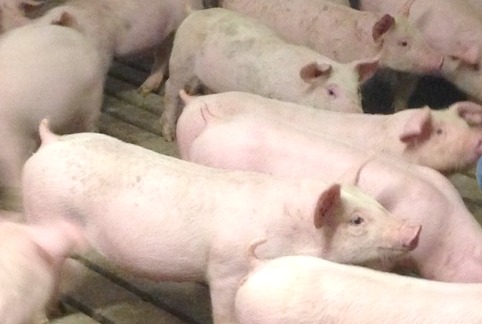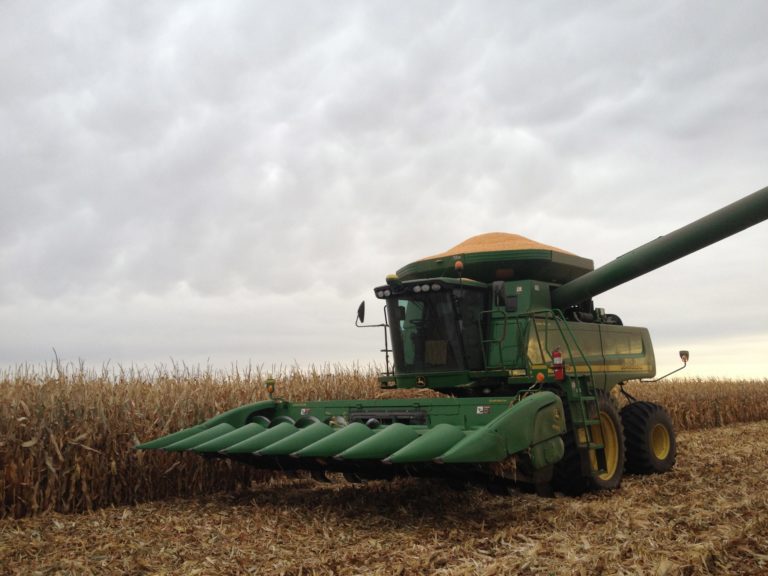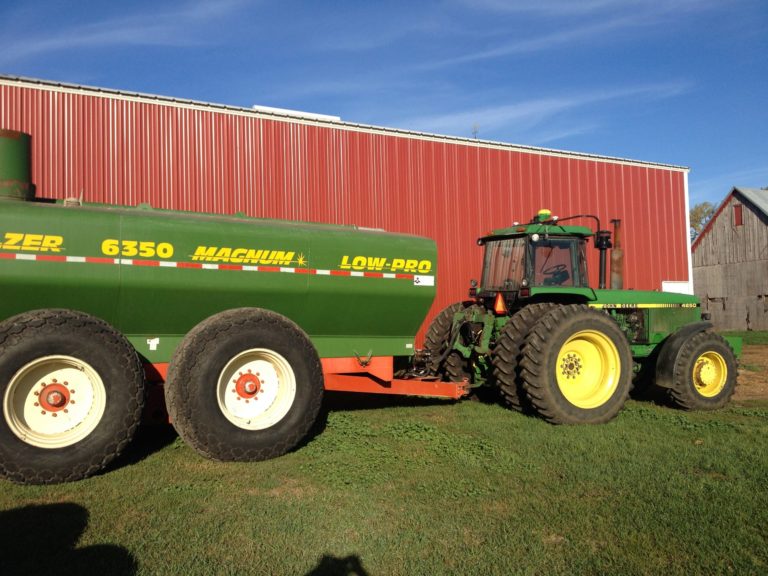Why Do Farmers Use Gestation Crates?
What is the best way to house sows? Is it gestation crates? Is it group housing? Is it outdoor living? I hope to answer why pig farmers use gestation crates. For most people, sow housing raises a lot of questions. Let me start with saying,
\”There is NO perfect sow housing. None. Nada.\”
When housing pregnant sows indoors, there are two basic options: Keep pigs in groups or put them in individual gestation crates or stalls. Market hogs (used for food) are housed in groups. So why are sows housed individually? Because they behave differently.
A little background information about our farm . . .
We have farmed for nearly 40 years and during those years, our farm has changed significantly. Those changes have either improved our lives as farmers, improved the lives of our animals or a combination of both.
Starting with a 96-sow herd, our sows were housed outdoors because, frankly, that was our only option. As beginning farmers, we were thrilled that we were following our dreams. Our farm comprised four outdoor dirt lots separated by a fence. Each lot contained a group of 24 sows. They remained in the outdoor lot until it was time for them to give birth, where they were moved into a farrowing (giving birth) barn. They remained in the farrowing barn through the birthing process and until the piglets are weaned, which is about three weeks.
Having sows outdoors was wonderful on the sunny, 70-degree days with a warm breeze blowing across your face. But, unfortunately, we have 5 days a year like that in Minnesota (okay, maybe a little exaggeration). It seems like either it\’s too windy, too hot, too cold, too dry, too wet, too sunny, etc. You get the picture.
In a nutshell, weather varies a lot in Minnesota.
We continued raising pigs in this manner for a few years. But we always knew we needed to make changes if we wanted to raise pigs long-term. Mother Nature is not kind many days. One particular incident I remember like it was yesterday was a perfect example of why we needed to change how we housed our animals.
The negative aspect of housing sows outdoors.
Shortly after a thunderstorm, a sow gave birth to piglets outside. She didn\’t make it in time to farrow (give birth) in the farrowing barn. Even with the best planning, sometimes births happen outdoors. Unbeknownst to us, another sow picked up each of those baby piglets, took them outdoors and drowned them in a mud puddle.
Every single one.
The sight made us sick. Both my husband and I looked at each other in bewilderment as we removed each one of those ten healthy piglets from the mud puddle. We both agreed that day, there must be a better way to take care of our animals. That day we felt like failures. Absolute failures. So was the beginning of our journey to build a gestation barn with individual gestation pens.
Our decision did not come easy. It took time, lots of farm discussion meetings, multiple trips to the loan officer and numerous discussions with our veterinarian, who was our animal consultant.
Pigs Inherent Behaviors
Most people don\’t realize that pigs are pack animals – they actually exhibit some of the same behaviors as wolf packs. Because they are pack animals, they need to establish a hierarchy within the group – or a \”boss\” sow. The way they establish this hierarchy is by attacking/fighting/killing each other. I personally have seen broken backs, broken legs, bitten/torn off ears and tails, and bitten/torn off vulvas. And not only are sows physically attacked – they also bully others from eating. In addition, fighting results in terminated pregnancies.
It\’s not pretty.
Genetic Changes
In addition to animal well-being issues, consumers\’ tastes were also changing. They were demanding a leaner cut of pork. In order to provide leaner pork, our pig genetics had to change. We now raise a crossbreed between a Large White and Landrace pig. The result? A long, lean pig–perfect for lean and nutritious pork. Prior to housing our animals inside, our main focus for pig genetics was survival of Minnesota\’s winters, which was a completely different genetic line based on different goals.
In addition to weather problems and the sow\’s pecking order, we were also concerned about:
- sunburn
- insect bites
- disease transmission by birds or rodents
- people being injured by sows
- wildlife predators
Life in Gestation Crates
After our gestation barn was built and the day we brought our sows inside, we noticed a difference in our sow\’s behavior immediately. Our sows were now content. No longer were they having to fear the \”boss sow.\” They now had protection.
Research shows that sows housed in stalls have a lower stress hormone than those housed in groups. In addition to animal contentment, we could now eliminate nearly all the weather issues. Temperature and fan controllers were used in the barns to help manage temperatures and bring in clean air. All sows had access to clean water and the proper amount of fresh feed. We now –could ensure they all ate–no more skinny or fat sows. In the summer, we kept them cool with a water sprinkling system, which is so important because pigs do not sweat. And we could give individual medical care, if needed.
Accepted Sow Housing
Sow housing is an individual choice. For our farm, individual gestation pens were the right choice. But for others, group housing works for them. Both the American Veterinary Medical Association and the American Association of Swine Veterinarians agree that both types of housing are acceptable. The real key to animal care is not the type of housing but, rather, the management of those animals.
Read that last sentence one more time . . . It\’s the management that matters.
According to an employee from Smithfield Foods, who has already made the decision to move their sows into group housing, observed that given a choice, 90% of the sows prefer to spend 90% of their time in individual stalls or gestation crates. And research backs this observation.
Farmers do care for their animals by working as a team with veterinarians and animal nutritionists. Animal mistreatment on farms makes as much sense as a car dealer keying his inventory. And none of us are \”keying cars.\”
I have included a few great videos of sow housing and information about pig farming.



Great Post! I have witnessed hog fights and my dad’s fingers being bitten by small pigs. Even though we do not raise pigs, I can see the benefits of the current housing methods. Very well said. Have a great week!
Thanks Kansas Farm Mom! Unfortunately I have witnessed a few too many sow fights too. The good thing is we haven’t seen this aggression in a very long time because of how we care for them. Thanks again and you have a good week too! I will be in the field doing tillage.
If you strapped them all down so they couldn’t move at all they would definitely never get in fights. I appreciate your post but I do take issue with this type of farming. It is the same logic that caused chicken farming to become an indoor venture and led to the rapid decline and near extinction of nutritious poultry in America. If the weather in Minnesota does not support raising hogs, then maybe hogs should not be raised in Minnesota? I don’t have the time to write a long response to your post, but please do consider the way that God/Mother Nature intended animals to live. There are serious health consequences that result in diverging from an animal’s natural habitat.
I appreciate your post. And its okay to agree to disagree. I can assure you that we don’t strap them down. And your comment about not raising hogs in Minnesota – Minnesota is the second largest state in hog farming. In my particular area we have a very strong and superior veterinarian presence that we use as our anmial care experts. We also are close to the major food source for hogs and use the manure to put back in our soil to replace nutrients. Actually studies have shown that hogs prefer spending over 80% of their time in maternity pens.
Well, as my dad might say, “Pig pucky!”
Maybe the pigs are in a better situation in individual gestation pens than in over-crowded pens and at the mercy of “bully-sows” but can you honestly look one of your pigs in the eye and believe they are happy in a pen where they cannot even turn around?! And are they only there during their 3m3w&3days worth of gestation or do they live their entire reproductive lives so enclosed?
I’m not an animal-rights activist, I enjoy eating meat and I’m an Animal Science grad from a well-known Ag school. I believe in farming and using both the land and animals to benefit us. I’m not anti-farmer, but I am against us forgetting the true value of animals as living, breathing and, yes, even THINKING, creatures.
I don’t have much experience with pigs, but if they truly need to be housed individually to prevent them attacking each other why not put them in stalls where they can turn around and maybe even walk a little? How about getting outside when the weather is good!! I mean i’ve heard the “you lazy pig!” comment, but i can’t help but think that ANY animal would appreciate the ability to MOVE even a little! The real reason pigs are housed in this way is to maximize space, a side benefit is the reduction in injuries.
I am interested in your response. I know farmers aren’t getting rich these days, but i hope that we don’t let the financial difficulties of sustaining a farm make us compromise our “real folks” values. Animal husbandry is not merely getting the maximum financial benefit from animals, its also making sure we respect the animals we use for our benefit.
Our decisions on sow housing is based on recommendations from animal care experts, our veterinarians. Veterinarian associations agree that group housing and individual housing both are acceptable forms of housing. What really matters as far as animal care, is how they are cared for. Decisions are based on science and research, such as the research that shows sows do not show any increase in stress when housed individually.
I’d be interested to see the studies that say there is no increase in stress – and to see who funded it and under what conditions the research was conducted. I’d also argue that the absence of stress should not be confused with contentment. After all, boredom isn’t stressful, but it will make any intelligent creature deeply unhappy.
I will see if I can find a link to it.
Also, many who raise pigs will tell you that given a choice, most sows will spend over 80% of their time in stalls.
Wanda, thank you for sharing your wealth of knowledge! I am absolutely loving learning about hog farming! You guys probably face more controversy than we do with GMO’s in grain farming!
Hmm, Walter at Sugar Mountain Farm sure seems to do a brilliant job of raising pork outside, with no grain to boot … The difference is he chose to do it that way and made it work, careful breeding for temperament and foraging ability and mothering ability. It certainly easier to make a living with much less animals doing it his way, his infrastructure costs are going to be a tiny percentage of the typical hog farmer. http://sugarmtnfarm.com/
The issue is about Chipotle vilifying of farmers who don’t raise pigs based on their specs.
Thanks Wanda. I was hoping you would post sometime on gestational crates. I watched the videos you suggested too. If I’m understanding correctly, the move to individual stalls happened around the 1960’s. I understand the economics of business and the implications of making changes to the system again if the industry was forced to. If money wasn’t part of the equation for the farmer, industry, or consumer (knowing the cost would get passed down) I still don’t understand why we can’t move to different farrowing procedures as new facilities and barns are opened. I’ve posted this video before but this is how Applegate Farms does farrowing. http://www.youtube.com/watch?v=9DBOsufrFjI. Are you saying their sows that are housed together in a pen openly without a individual stall are usually meaner to each other and will have more challenges getting individual care (food, etc)? In the group housing video you shared, the pigs were in individual stalls that opened upon their will. I’m trying to understand this better but there are so many different ways that animals can be raised.
I can’t help but watch how the mother pig and piglets in the Applegate video have a much different size pen and the piglets still appear to be safe.
I did watch the video Connie. The individual stalls really never took off in our area until the 80’s, not the 60’s. When I looked at where the sows farrow, I still see where the sows could step on or even at times, bite the piglets. There is no doubt that when a farmer builds a farrowing barn, he will look at what equipment is available at that time. Just like when we buy new phones, there are new and better features. Pig equipment is no different. I am not against this type of animal care system and as I believe farmers raise their animals and crops in the ways they know best. It’s all about the management. And much of that management has to do with resources, expertise and knowledge.
There is room for us all. And Applegate has a different market than farmers like myself.
This is excellent! Thank you for sharing your story.
Thanks for the feedback. You may already know this, but I just read today that Hormel may be buying Applegate Farms. I was very surprised to hear this. I’m interested to see if Applegate will maintain or change their pig rearing methods based on Hormel. I’m assuming the Applegate brand will grow and they will need more supply. http://www.reuters.com/article/2015/02/12/applegatefarms-ma-hormelfoods-idUSL1N0VM2MS20150212
Uh ma’am? No need to be rude but I think you left a grammar mistake in the second paragraph… Anyways, this is a great site, thank you for this useful information!
Thank you for pointing it out. Fixed it!